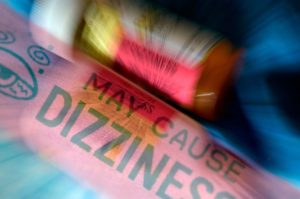THE MOST IMPORTANT ATTRIBUTES OF A NEW BRAND NAME FOR A PRODUCT OR SERVICE
by Dave Dawsey
It’s NOT Being Memorable or Unique! The Most Important Consideration is Whether a New Name is Likely to Get You Sued
That’s right. The most important attribute of a new brand name for a product or service is NOT whether it is memorable or unique; it IS whether the new brand name is likely to get you sued.
This is where there is a huge disconnect with traditional branding agencies and their practices. I would love to take a survey of the highest profile branding houses and compile their responses to the question “list, in order of importance, the top 5 attributes to consider when selecting a new brand name.” What percentage of the agencies do you think would list something like “low risk” or “avoidance of lawsuits” in their top 5? I would guess less than 10%.
Conversely, what would be the result if the same survey were completed by brand managers who have launched at least 10 new products or services, or entrepreneurs that have been involved in the start of multiple new companies and at least 10 new products or services? I guarantee the percentage indicating “low risk” or “avoidance of lawsuits” in their top 5 would be many orders of magnitude greater than the result from the branding agencies.
Why the disparity? Simple, the brand managers know their job is potentially on the line if they move forward with a questionable name and their decision results in a lawsuit, or a forced rebranding effort. Similarly, the experienced entrepreneur recognizes that funding a fight associated with a trademark dispute is a horrible investment of funds that should be invested in building the business (or their retirement account).
What would it take for this risk to crack the branding agencies’ top 5 list? Skin in the game, of course (which will be the topic of future articles).
The naysayer would argue that whether a 3rd party takes issue with your use of a trademark is outside your control. True, but only to a degree. For instance, let’s say there is a nasty blind curve on a road near your house that also happens to be about a mile from the only bar within 30 miles. There is at least one accident a month on the curve and it inevitably happens late on a Saturday. Yes, getting hit by a drunk driver is outside your control, however avoiding the deadly curve late on Saturday evenings is well within your control and likely reduces your risk of being killed by a drunk driver by a factor of at least 1000!
The bottom line is that the risks associated with a name has always been a distant consideration of agencies (if one at all), and they want nothing more than to shift the research, analysis, and risk assessment back to the client. I understand why, it just bogs down the process and makes a naming project significantly more complex. However, the reality is that substantive legal research and analysis needs to be occurring during the naming process. Waiting until the end of the process is a recipe for disaster. Additionally, when I say “substantive legal research” I mean research by, and opinions of, trademark counsel – not a first-year marketing graduate playing around on the trademark office website after watching a YouTube video.
Yes, I know your naming agency will tell you about all the trademark “screening” they perform, generally with a lot of hand waving and buzz words thrown around, but what else would they say. Do you want to be at the end of the process and only then receive an education from trademark counsel regarding why incorporation of words such as monster, entrepreneur, and armor significantly increase the likelihood that you will be writing big checks to litigation attorneys once your brand is launched? Professional namers need to know the leading “trademark bullies” and the associated words to avoid; failure to do so is akin to a physician not worrying about the side effects of a medicine they are prescribing.

Is your naming guru writing prescriptions without a care in the world about the side effects?
What’s the solution? Require the agency to provide a comprehensive US trademark search and opinion with each name they present to you throughout the process. As you can imagine, in today’s borderless ecommerce society things can get complicated real quick, and international considerations should be discussed with an agency prior to the start of a naming project.
A Close Second is Whether the New Name is Protectable
While the most important attribute of a new brand name for a product or service is the likelihood of the name inciting a trademark dispute, the second most important attribute (and it’s a close second) is whether the name is protectable. Don’t believe me, ask yourself “would I invest in a new start-up that was going to use my investment on advertising and marketing to build a brand around a name the company knows they cannot protect?” If so, you shouldn’t be investing. And if a start-up moves forward with such a name, investors should wonder what other questionable decisions the leadership team is making.
Did you know there are many reasons a name may not be registered as a trademark, not just the commonly known likelihood of confusion with another trademark (which is rarely fully understood by branding experts)? For instance, do you, or your naming consultants, understand the legal nuances and pitfalls associated with merely descriptive and deceptively misdescriptive marks, primarily geographically descriptive and deceptively misdescriptive marks, marks that may be viewed as merely surnames (a recent appeal affirmed the rejection of an application to register the mark Magnus for whiskey), and marks that falsely suggests a connection with persons (living or dead), a situation that arose for marks such as Twiggy and Apache? No, of course not. Why would you… it’s not your job or area of expertise, and frankly it takes years of experience for trademark counsel to fully appreciate these issues.
However, is should be hard to disagree with the fact that the person steering the ship on your naming project better understand these legal nuances and pitfalls. Unfortunately, agreeing with this fact is entirely different than taking action on it, as the later requires doing things differently and having tough conversations about new expectations of your name consultants.

Think your agency would have anticipated problems with the Magnus name in light of its use as a surname?
And a Close Third is the Likely Scope of Protection Associated with the New Name
To recap… the most important attribute of a new brand name is the likelihood of the name inciting a trademark dispute; and the second most important attribute whether the name is protectable. Now, the third most important attribute of a new name for a product, or service, is the likely scope of trademark protection achievable for the new name.
In order to appreciate what is meant by “scope of protection” one must understand the concept of a “crowded field.” A crowded field is one in which there are many previously registered trademarks having similarities to the new name. In such a situation the likely scope of protection afforded to the new name will be narrow at best. So, while protection may be achievable in a crowded field, since many similar names predate the new name one should expect to have little leverage to prevent other from coming out with similar names unless they are essentially identical.
For example, consider a new coffee shop with its sights set on franchising across the US. Let’s say that their branding agency has sold them on the name Blue Crab™ coffee house, a nod to the seaside location of their first shop. Well, coffee bars fall within trademark class 43 (more on classes in a future article), which also happens to be the class associated with restaurant and bar services. Hypothetically the following are registered trademarks within class 43: Blue Tuna, Blue Starfish, Blue Minnow, Blue Whale, Blue Lobster, Purple Crab, Yellow Crab, Pale Crab, Baby Crab, and Translucent Crab. Now, assuming that the Blue Crab trademark application is approved and becomes a registered trademark, would you guess that the registration provides a broad scope of protection or a narrow scope of protection?
I trust you recognize it would be a narrow scope of protection. In other words, the owner should not be surprised that a competing coffee shop named Blue Herron or Bubbly Crab could open around the corner and there is little that could be done about it. Sure, the owner could throw a lot of money at the situation and finance a litigator’s beach house, but let’s be honest – it doesn’t take genius to realize that doing so is likely a losing proposition and a waste of money. Therefore, if the owner is the type of person that would get really pissed off about the opening of a competing coffee shop named Blue Herron or Bubbly Crab, then they should not be going with the Blue Crab name.
A narrow scope of protection is often meaningless from the practical standpoint of blocking others, and generally means that the name is so vanilla that it is not unique and therefore unlikely to stand out from the competition. Again, this is not something you want to learn at the completion of a naming project when your trademark counsel conducts their research. Rather, it is something your naming experts should recognize during the name generation phase of the project and they should eliminate such names from consideration before the client ever considers a name with a narrow scope of protection. Unfortunately, this requires branding agencies to innovate and do things differently.
Conversely, a name that affords a broad scope of protection is priceless. Sure, arbitrary and fanciful names often provide broad scope of protection but, for reasons I will touch upon in another article, that is taking the easy way out and don’t impress me. However, I am impressed by suggestive names that are so damn creative they afford a broad scope of protection.
Let’s say you are launching a line of vegetable based meat substitutes, the easy thing for an agency to do is only propose arbitrary and fanciful names, then justify the names with the same old tired examples of how well it has worked for brands like Apple and Uber. However, the right thing to do is also propose creative suggestive names like the INCOGmeatO line of products introduced by MorningStar Farms. I would love to meet the person that came up with that name and shake their hand; it is genius. They have played on the perfect word for such a product – incognito (meaning having one’s true identity concealed) and tied in the suggestion of “meat.”
I would love the opportunity to try to come up with a better name for such a product, but am not sure it can be done. Does the name offer a broad scope of protection? Yes, but let’s not fool ourselves and believe the scope is so broad that it prevents other words including “meatO” variations. In fact, there is a pending application directed to similar products seeking protection of the MEATo mark and it predates the INCOGmeatO application by 10 months, illustrating that it is impossible to remove consideration of legal risks from the naming process (and I suspect MorningStar Farms has a meeting or two about this senior trademark application).
So, how does one come up with a name for a new product or service that is likely to be afforded a broad scope of protection? Well, that’s a topic for another day!
The Take-Away
The three most important attributes of a new brand name are largely legal in nature, and the brands that recognize this, and rethink their naming process, are going to be the ones that avoid the headaches and waste inherent with the traditional naming process. Times are changing, are you?
Please join our email list if you would like to be notified when we post additional “naming thoughts & strategies”; and don’t hesitate to email me (Dave@HobbleTheWobble.com) with comments and suggestions.


